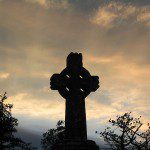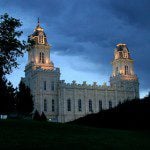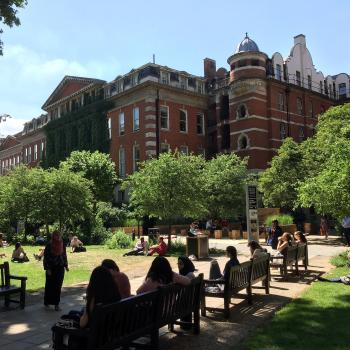
(Photo from LDS Media Library)
Additional notes from Dallas Willard and Brandon Rickabaugh, “Intentionality contra Physicalism: On the Mind’s Independence from the Body,” Philosophia Christi 20/2 (2018): 497-516. The late Professor Willard taught philosophy at the University of Southern California; Brandon Rickabaugh teaches philosophy at Baylor University.
The authors quote from C. J. Ducasse, A Critical Examination of the Belief in a Life after Death (Springfield, IL: Charles C. Thomas, 1961), 203:
[T]he balance of the evidence so far (thus) obtained is on the side of the ability of survival (after death) and, in the best cases (studied), of survival not merely of memories of the life on earth, but of survival also of the most significant capacities of the human mind, and of continuing exercise of these.
They also quote from Gary R. Habermas, “Evidential Near-Death Experiences,” in The Blackwell Companion to Substance Dualism, ed. Jonathan J. Loose, Angus J. L. Menuge, and J. P. Moreland (Oxford: Wiley-Blackwell, 2018, 243:
[I]t seems safe to say that the most common impression among scholars is that aspects of this research such as the NDEr’s perception of leaving her body and looking down on it from above seem quite strongly to favor a dualist perspective about the self and consciousness.
“However,” they say (and I agree strongly with them on this point), “the philosophy of mind has largely ignored this set of data” (512). Moreover — and, again, I agree with them — the details of NDE studies should be considered more fully for their implications regarding the relationship of mind and body. In support of their claim, they cite David Lund, Persons, Souls, and Death: A Philosophical Investigation of an Afterlife (Jefferson NC: McFarland, 2009) and J. Steve Miller, Near-Death Experiences as Evidence for the Existence of God and Heaven (Acworth Georgia: Wisdom Creek, 2012).
Dallas Willard himself offered what they term “pastoral thoughts on NDEs and related matters” in his book The Divine Conspiracy: Rediscovering Our Hidden Life in God (New York: HarperCollins, 1997), 397-398.
They also cite an undated personal email from philosopher Gary Habermas, listing the following items as, in his view, “the top academic works on the evidence for NDEs which physicalism cannot account for”:
Janice Miner Holden, “Veridical Perception in Near-Death Experiences,” in The Handbook of Near-Death Experiences, ed. Janice Holden, Bruce Greyson, and Debbie James (Santa Barbara, CA: Praeger, 2009), 185-212.
Bruce Greyson, “Comments on ‘Does Paranormal Perception Occur in Near-Death Experiences?,'” Journal of Near-Death Studies 25 (2007): 237-239.
Bruce Greyson, “Seeing Dead People Not Known to Have Died: ‘Peak in Darien Experiences,” Anthropology and Humanism 35 (2010): 159-171.
Bruce Greyson, “Western Scientific Approaches to Near-Death Experiences,” Humanities 4 (2015): 775-796.
I have the first of these, and will find the others. Then I’ll post my notes on them.
Posted from Richmond, Virginia












